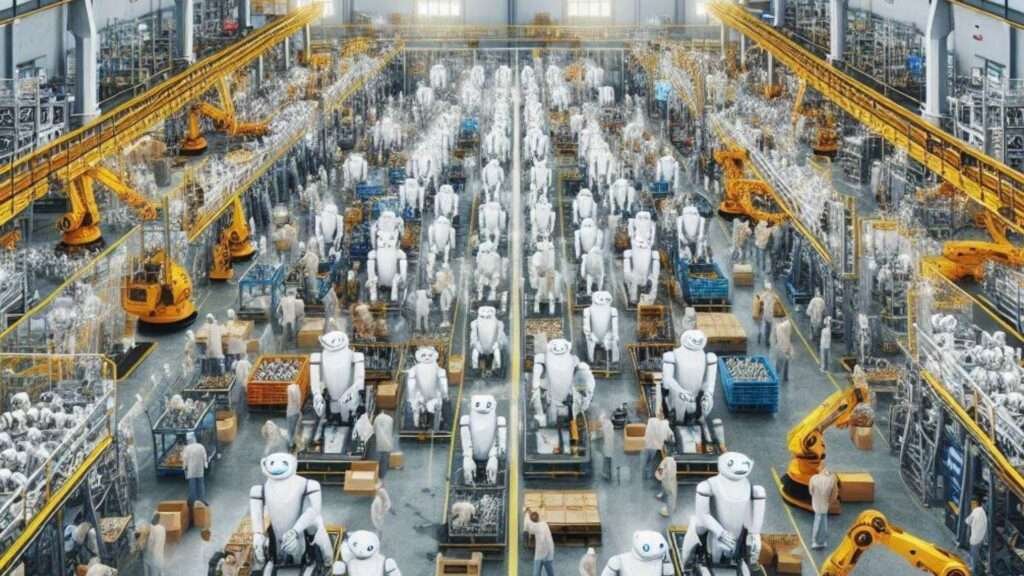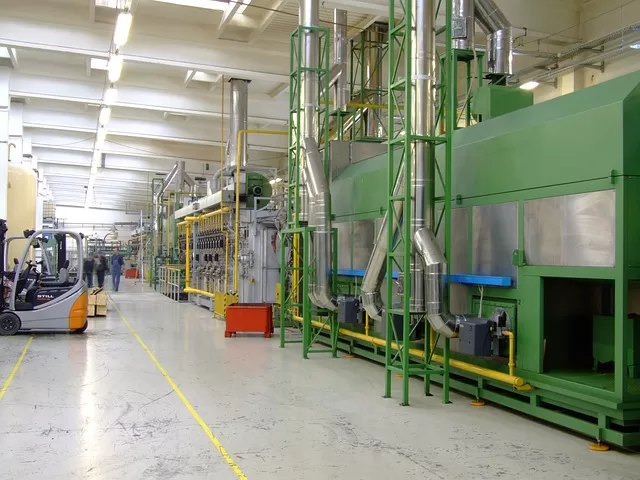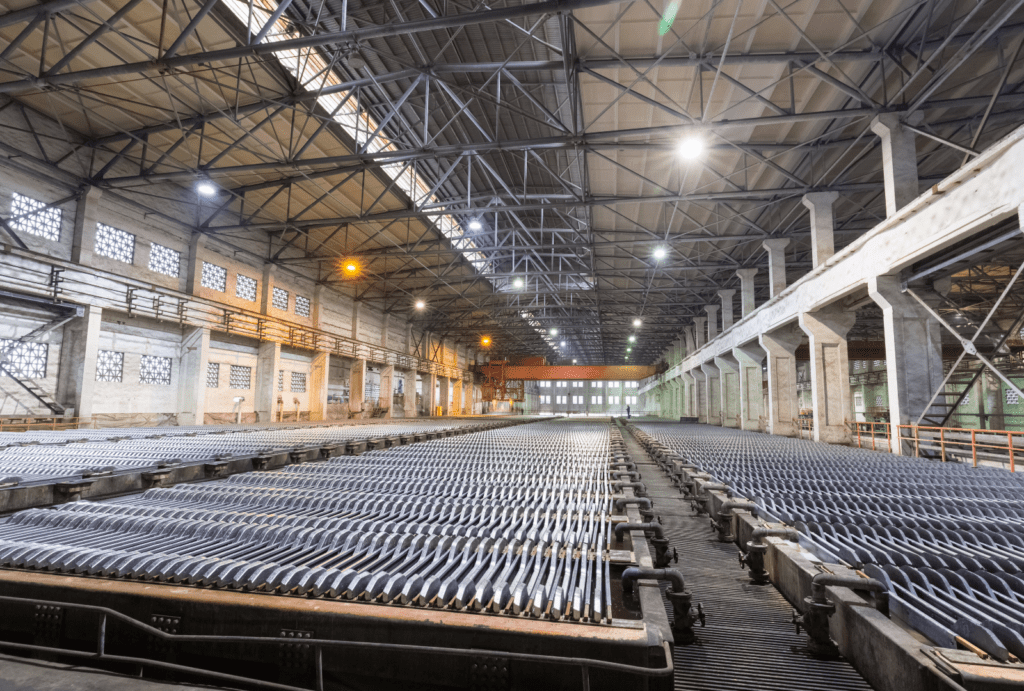The Interconnection of The Six Big Losses, OEE, TPM, RCM & Pareto Analysis.
With this article I’ll be explaining the Six Big Losses in
manufacturing and their interconnection with Overall Equipment Effectiveness
(OEE), Total Productive Maintenance (TPM), and Reliability-Centered Maintenance
(RCM).
The Key Points I will Cover Are:
1.
The
Six Big Losses: Categorized into availability, performance, and
quality losses, these are critical factors impacting manufacturing efficiency.
2.
OEE: A vital
metric for measuring manufacturing productivity, combining availability,
performance, and quality factors.
3.
TPM
and RCM: Maintenance strategies that work in tandem with
OEE to improve equipment reliability and efficiency.
4.
I’ll provide some detailed analysis of each loss category:
a.
Availability
losses: Equipment failures, setup, and adjustments.
b.
Performance
losses: Idling, minor stops, and reduced speed.
c.
Quality
losses: Process defects and reduced yield.
5.
Strategies for mitigating these losses and
improving overall equipment performance.
6.
OEE calculations and equations, providing a
quantitative approach to measuring efficiency.
7.
Additional metrics and KPIs related to the Six Big
Losses, OEE, TPM, and RCM.
8.
Application of Pareto Analysis in identifying and
prioritizing the most significant factors contributing to equipment losses.
I hope to provide manufacturing and/or maintenance
professionals with a comprehensive guide for understanding and addressing the
key factors affecting equipment performance and overall operational efficiency.
Table Of
Contents:
1. Introduction To The Six Big Losses.
2. Interconnection between TPM, OEE, RCM &
the Six Big Losses.
3. Detailed Understanding of Availability Losses.
3.1. Equipment Failure.
3.2. Additional Causes of Equipment Failure.
3.3. Strategies to reduce the likelihood of
equipment failure.
4. Setup and Adjustments.
5. Common Causes of Performance Losses.
6. Impacts On Production.
7. Strategies to Mitigate Performance Losses.
8. Evaluation of Quality Losses.
9. Improving Equipment Performance using TPM,
OEE and RCM.
10. OEE Calculations and Equations.
11. Other Metrics Related To The Six Big Losses,
OEE, TPM, and RCM.
12. Using Pareto Analysis to Address the Six Big
Losses.
12.1.
Pareto
Analysis Examples.
13. Conclusion
1) Introduction To The Six Big
Losses
The six big losses are crucial concepts in manufacturing,
helping to identify inefficiencies that impact overall equipment effectiveness
(OEE) and production performance. These losses are categorized into three main
areas: availability, performance and quality.
1.
Availability Losses:
a.
Equipment Failure: Unexpected breakdowns and
malfunctions causing unplanned downtime.
b.
Setup and Adjustments: Time lost during
transitions between production activities, including machine changeovers and
fine-tuning.
2.
Performance Losses:
a.
Idling and Minor Stops: Brief interruptions caused
by minor issues like blockages or misfeeds.
b.
Reduced Speed: Equipment operating below optimal
speed due to wear and tear, improper settings, or suboptimal conditions.
3.
Quality Losses:
a.
Process Defects: Non-conforming products produced
during manufacturing that require rework or disposal.
b.
Reduced Yield: Losses occurring from startup
through production, including the adjustment phase and substandard products
during initial machine warm-up.
Understanding and addressing these six big losses is vital for
organizations striving to maximize OEE and enhance manufacturing efficiency.
By implementing strategies such as Total Productive Maintenance
(TPM) and Reliability-Centered Maintenance (RCM), companies can:
1.
Improve equipment availability through regular
maintenance and quick issue resolution.
2.
Enhance performance by addressing root causes of
minor stops and optimizing operating conditions.
3.
Boost quality by implementing effective quality
control measures and ensuring consistent production conditions.
Focusing on these areas allows manufacturers to:
1.
Gain clear insights into specific areas requiring
improvement.
2.
Better forecast production outcomes.
3.
Optimize maintenance schedules.
4.
Enhance overall production quality and quantity.
By systematically addressing these losses, organizations can
achieve sustained operational excellence, improved efficiency, and maintain a
competitive advantage in the market.
2) Interconnection between TPM, OEE,
RCM & the Six Big Losses.
Total Productive Maintenance (TPM), Overall Equipment
Effectiveness (OEE), and Reliability-Centered Maintenance (RCM) are cornerstone
methodologies in the industrial maintenance space.
Each one uniquely contributes to the overarching goal of
minimizing equipment downtime, maximizing operational efficiency and targeting
the six big losses (breakdowns, setup and adjustment losses, minor stoppages,
reduced speed, quality defects, and startup losses).
TPM is an all-encompassing approach focused on maintaining and
improving the integrity of production and quality systems through machines,
equipment, processes, and employees that add value to the organization.
By systematically involving every employee, from top
management to frontline operators, TPM strives to foster a culture of
continuous improvement. Through focused improvement initiatives, TPM unearths
root causes of the six big losses and develops strategies to prevent them,
ensuring equipment runs flawlessly.
OEE acts as a pivotal metric within TPM and RCM frameworks. It
provides a comprehensive measure of how effectively a manufacturing operation
is utilized. OEE quantifies the extent of the six big losses, enabling
companies to pinpoint inefficiencies and develop targeted improvement plans.
By doing so, it offers a precise baseline to track the success
of TPM and RCM initiatives in real-time.
RCM complements these efforts by ensuring that maintenance
strategies are not only effective but also efficient.
Through a rigorous analysis of equipment functions, potential
failures, and their impacts, RCM prioritizes maintenance tasks based on
criticality and risk. This structured approach ensures that maintenance efforts
are focused on preventing significant equipment failures that align with the
six big losses, thereby enhancing operational reliability.
When combined, TPM, OEE, and RCM create a powerful synergy.
TPM fosters a proactive culture; OEE provides a clear metric for benchmarking
and improvement, while RCM ensures maintenance actions are optimally allocated.
Together, these methodologies provide a comprehensive
framework that systematically eliminates the six big losses, paving the way for
enhanced equipment performance and operational excellence.
3) Detailed Understanding of
Availability Losses.
Availability losses are categorized into two main types:
equipment failure and setup and adjustments.
Both segments are essential to understand as they impact overall
equipment effectiveness (OEE) and Total Productive Maintenance (TPM).
Below I will explore these categories in more detail to grasp
their causes, implications, and potential solutions.
3.1
Equipment Failure:
Equipment failure, or unplanned stops, occurs when a piece of
machinery breaks down unexpectedly.
These unanticipated interruptions lead to substantial
disruptions in production schedules, resulting in significant productivity
losses.
Common causes of equipment failure include worn-out
components, lack of preventive maintenance, and operator error.
An illustrative example of equipment failure is a conveyor
belt in a manufacturing plant that suddenly malfunctions due to a broken motor.
The immediate impact is halted production, potentially causing
delays in the entire assembly line, which can lead to missed deadlines and
increased operational costs.
Organizations can mitigate equipment failure by adopting
preventive maintenance strategies, training operators thoroughly, and
implementing a robust predictive maintenance program to identify and address
potential issues before they escalate.
3.2
Additional Causes of Equipment Failure.
1.
Aging and Usage:
a.
Equipment naturally wears out over time due to
regular use. Each piece of machinery has an expected lifespan, which can be
shorter or longer depending on usage frequency and maintenance quality.
b.
Understanding the lifespan and usage patterns can
help in planning timely replacements and upgrades to avoid failures.
2.
Improper Operation:
a.
Improper use of machinery, often due to inadequate
training or lack of information, can lead to premature damage and failures.
b.
For instance, running equipment at incorrect
speeds or performing tasks in the wrong order can stress components and cause
breakdowns.
3.
Environmental Factors:
a.
External conditions such as extreme temperatures,
humidity, poor air quality, and contamination can contribute to equipment
failure.
b.
Corrosion and contamination from foreign
substances can degrade equipment reliability.
c.
Proper storage and environmental controls can
mitigate these risks.
4.
Overheating:
a.
Prolonged operation or poor ventilation can cause
equipment to overheat, leading to thermal stress and component damage.
b.
Regular monitoring of equipment temperature can
prevent such failures.
5.
Electrical Issues:
a.
Problems with wiring, connections, and electrical
components can cause failures, especially in aging equipment.
b.
Regular inspections and maintenance of electrical
systems are crucial to prevent such issues.
3.3
Strategies to reduce the likelihood of
equipment failure.
1.
Preventive Maintenance:
a.
Regular preventive maintenance strategy tasks such
as lubrication, cleaning, and parts replacement can prevent wear and tear.
b.
Implementing a preventive maintenance schedule
based on time or usage can help identify and address issues before they lead to
failures.
2.
Predictive Maintenance:
a.
Using advanced technologies like sensors and data
analytics, predictive maintenance monitors equipment conditions in real-time to
predict failures before they occur.
b.
This approach allows for timely interventions and
reduces unplanned downtime.
3.
Training and Culture:
a.
Ensuring that operators are well-trained and
fostering a positive maintenance culture can significantly reduce equipment
failures.
b.
Continuous education, on-the-job training, and a
supportive environment where maintenance is valued can lead to better equipment
handling and early problem detection.
4.
Environmental Controls:
a.
Maintaining proper environmental conditions, such
as controlling temperature, humidity, and air quality, can extend equipment
life.
b.
Protecting equipment from contaminants and
ensuring proper storage conditions are also essential.
5.
Regular Inspections:
a.
Routine inspections help in early detection of
potential issues.
b.
Checking for signs of wear, corrosion, and other
problems allows for timely corrective actions, preventing minor issues from
escalating into major failures.
4)
Setup and Adjustments:
Setup and adjustments, or planned stops, refer to scheduled
pauses in production for activities such as equipment calibration, tooling
changes, or material adjustments.
Although these stops are planned, they still contribute to
availability losses by reducing the total productive time available.
A typical example of setup and adjustments is during a tooling
changeover in an automotive factory. The line might stop for an hour to switch
from producing one car model to another.
While necessary, these activities can be time-consuming and
inefficient if not managed correctly. Lean manufacturing principles and quick
changeover techniques, such as Single-Minute Exchange of Die (SMED), are
valuable solutions to minimize the downtime associated with setup and adjustments.
Understanding and addressing the causes of availability losses
through effective maintenance strategies like TPM, tools like OEE for
monitoring and analysis, and methodologies such as Reliability-Centered
Maintenance (RCM) can significantly enhance equipment performance.
By focusing on both unexpected equipment failures and
inevitable setup and adjustments, organizations can strive towards achieving
optimal operational efficiency.
In the landscape of equipment performance, performance losses
represent a significant challenge, encompassing idling and minor stops (small
stops), as well as reduced speed (slow cycles).
These losses are a core focus of TPM (Total Productive
Maintenance), OEE (Overall Equipment Effectiveness), and RCM (Reliability-Centered
Maintenance) methodologies.
A thorough understanding of their common causes and impacts on
production is crucial for formulating effective mitigation strategies.
5)
Common Causes of Performance Losses.
Idling and minor stops often occur due to momentary
interruptions such as operator interventions, machine jams, or material
blockages.
These small stops, although brief, accumulate over time,
leading to significant reductions in overall productivity.
Similarly, reduced speed ensues when equipment operates below
its design capacity or ideal operational speeds.
This can happen due to mechanical wear and tear, suboptimal
maintenance schedules, or insufficient operator training.
6) Impacts on Production.
The impacts of performance losses on production are profound.
Frequent idling and minor stops disrupt the flow of production processes,
leading to inconsistent output rates and increased cycle times.
These disruptions introduce variability into production
schedules, making it more challenging to meet delivery deadlines and maintain
high-quality standards. Reduced equipment speed further exacerbates these
issues, resulting in lower throughput and ineffective utilization of resources.
Moreover, the inconsistency caused by these losses often
necessitates additional quality checks, rework, and even partial or complete
production shutdowns in severe cases.
7) Strategies to Mitigate
Performance Losses.
Mitigating performance losses requires strategic interventions
grounded in TPM, OEE, and RCM principles.
Implementing regular and systematic maintenance schedules
ensures that equipment operates at optimal speeds, reducing mechanical failures
and wear.
Employing real-time monitoring tools can help in early
detection and prompt response to minor stops, thereby minimizing downtime.
Enhancing operator training to focus on quick problem resolution and efficient
machine operation is equally critical.
Moreover, fostering a culture of continuous improvement
empowers teams to identify and address performance obstacles proactively.
Regularly analyzing and reviewing performance data through OEE
metrics offers insights into operational inefficiencies, enabling targeted
improvements.
Integration of automated systems and predictive maintenance
techniques forms another layer of defense against performance losses, ensuring
sustained equipment efficiency and reliability.
8) Evaluation of Quality Losses.
Quality losses, a critical aspect affecting equipment
performance, are typically grouped into two primary categories: process
defects, also known as production rejects, and reduced yield stemming from
startup rejects.
These losses can significantly hamper overall equipment
effectiveness (OEE) and necessitate a thorough understanding of their causes to
implement successful improvement strategies.
Process defects, or production rejects, occur during regular
operations and are often attributed to variations in the manufacturing process.
Common factors leading to these defects include equipment wear
and tear, suboptimal calibration, or inconsistencies in raw material quality.
Addressing these issues demands a proactive approach,
leveraging Total Productive Maintenance (TPM) principles to ensure regular
equipment inspections, routine maintenance, and timely calibration.
Additionally, establishing stringent quality control measures
and frequent process audits can minimize discrepancies, thereby reducing
production rejects. Reduced yield, or startup rejects, typically arise during
the initial phases of production, often when machinery is ramping up to optimal
operating conditions.
This form of quality loss usually results from transient
factors such as incorrect machine settings, unstable environmental conditions,
or operator errors.
To mitigate startup rejects, it is crucial to integrate
preventive measures like standardized startup procedures, comprehensive
operator training, and real-time monitoring systems that provide immediate
feedback for adjustments.
Implementing such measures aligns with TPM goals, ensuring
smoother startups and consistency in production quality.
Preventive maintenance and quality assurance strategies are
essential in tackling both process defects and reduced yield.
Employing techniques such as Statistical Process Control (SPC)
and root cause analysis can help identify underlying issues contributing to
quality losses.
By systematically addressing these factors, organizations can
significantly enhance their OEE and align their maintenance practices with the
Reliability-Centered Maintenance (RCM) framework.
This integrative approach not only improves product quality
but also optimizes equipment lifespan and operational efficiency.
Understanding and mitigating quality losses through proactive
and preventive measures is vital for maintaining high equipment performance.
Embracing TPM, OEE, and RCM principles provides a structured
pathway for organizations striving to reduce production rejects and startup
defects, thereby enhancing overall operational effectiveness and product
quality.
9) Improving Equipment Performance
using TPM, OEE and RCM.
Enhancing equipment performance is paramount in modern
industrial settings. One effective method is the comprehensive analysis and
monitoring of Overall Equipment Effectiveness (OEE).
This integral metric serves as a quintessential gauge,
encompassing three critical parameters: Availability, Performance, and Quality.
By systematically measuring OEE, it becomes feasible to
pinpoint specific areas of inefficiency and strategize targeted improvements.
For instance, scrutinizing downtime can unveil patterns of
both scheduled and unscheduled losses, guiding actionable steps towards
minimizing disruptions.
Total Productive Maintenance (TPM) complements OEE by
promoting proactive maintenance practices. TPM advocates for a paradigm shift
from reactive to preventive and predictive maintenance.
Embracing Autonomous Maintenance empowers operators to assume
responsibility for routine tasks, such as cleaning and inspection, thereby
enhancing machine reliability.
Through focused improvement initiatives and effective
workplace organization (5S methodology), TPM fosters an environment of
continuous improvement, ensuring that minor issues are addressed proactively
before escalating into significant failures.
Reliability-Centered Maintenance (RCM) further bolsters the
enhancement efforts by systematically evaluating the operational context of
each equipment.
The essence of RCM lies in discerning the most effective
maintenance strategies according to the criticality and functional requirements
of each asset.
Implementing RCM principles entails conducting a Failure Modes
and Effects Analysis (FMEA) to identify potential failure points and their
consequential impacts, facilitating the formulation of optimal maintenance
tasks that uphold reliability while curbing costs.
Strategically addressing the six big losses (Breakdowns, Setup
and Adjustments, Small Stops, Reduced Speed, Startup Rejects, and Production
Defects) is a fundamental aspect of this multifaceted approach.
By aligning TPM, OEE, and RCM methodologies, it becomes
possible to systematically reduce these losses. For example, leveraging
predictive analytics can preemptively detect and mitigate breakdowns.
Concurrently, streamlining setup processes and standardizing
work routines can substantially decrease changeover times, thus enhancing
overall equipment effectiveness.
Integrating these techniques creates a robust framework for
achieving and sustaining optimal equipment performance.
By amalgamating precise measurement techniques, proactive
maintenance strategies, and reliability-centered evaluations, organizations can
effectively mitigate inefficiencies, reduce downtime, and drive continuous
improvement, fostering a resilient and productive manufacturing environment.
10) OEE Calculations and Equations.
Overall Equipment Effectiveness (OEE) is a pivotal metric in
the realms of Total Productive Maintenance (TPM) and Reliability Centered
Maintenance (RCM), offering a holistic view of how effectively a manufacturing
process is performing.
OEE is the product of three core components: availability,
performance, and quality. Calculating these elements accurately is essential
for deriving actionable insights towards equipment optimization.
First, availability measures the proportion of scheduled time
that the equipment is available for production. It is calculated as:
Availability = (Operating Time / Planned Production Time) *
100.
For example, if a machine is scheduled to run for 500 minutes
and actually operates for 450 minutes, the availability would be:
Availability = (450 / 500) * 100 = 90%.
Next, performance assesses whether the equipment is operating
at its maximum speed. It’s calculated by comparing the actual output to the
theoretical maximum output.
The formula is:
Performance = (Ideal Cycle Time * Total Count) / Operating
Time.
If the ideal cycle time per unit is 1 minute and the machine
produces 420 units in 450 minutes, the performance equation becomes:
Performance = (1 * 420) / 450 = 0.933 or 93.3%.
Lastly, quality measures the percentage of good parts produced
out of the total parts produced.
The formula is:
Quality = (Good Count / Total Count) * 100.If 420 units are
produced but only 400 are good, the quality calculation is:
Quality = (400 / 420) * 100 = 95.2%.
To find the overall OEE, multiply the three derived
percentages:
OEE = Availability * Performance * Quality.
Using the previous examples, the calculation would be:
OEE = 90% * 93.3% * 95.2% = 0.798 or 79.8%.
Understanding and accurately calculating these metrics can
significantly enhance equipment performance.
OEE, as an aggregate measure, empowers organizations to
pinpoint inefficiencies and target improvements across availability,
performance, and quality dimensions.
11) Other Metrics
Related To The Six Big Losses, OEE, TPM, and RCM.
1.
Mean Time Between Failures (MTBF): MTBF =
Total Operating Time / Number of Failures.
This metric helps track the frequency of equipment failures, relating
directly to the Equipment Failure loss.
2.
Mean Time To Repair (MTTR): MTTR =
Total Repair Time / Number of Repairs. MTTR measures the average time taken to
repair equipment, which impacts the Equipment Failure loss.
3.
Overall Process Effectiveness (OPE): OPE
extends OEE by including broader factors like logistics and planning
efficiency. It’s calculated similarly to OEE but considers the entire
production process.
4.
Total Effective Equipment Performance (TEEP): TEEP =
OEE x Utilization. This metric considers the total time available, including
planned downtime.
5.
Overall Labor Effectiveness (OLE): OLE
measures how effectively labor is utilized in the production process, considering
factors like absenteeism and labor productivity.
6.
Planned Maintenance Percentage (PMP):
Percentage of total maintenance time that was planned.
7.
Maintenance Schedule Compliance:
Percentage of scheduled maintenance tasks completed on time.
8.
Maintenance Cost per Unit: Total
maintenance cost / Total units produced.
9.
Downtime Cost: Cost of
lost production due to equipment downtime.
10. Total
Recordable Incident Rate (TRIR): (Number of recordable incidents
x 200,000) / Total hours worked.
11. Near
Miss Frequency Rate (NMFR): (Number of near misses x 200,000) / Total
hours worked.
These metrics and KPIs provide a comprehensive view of
manufacturing performance, helping to identify areas for improvement and track
progress in addressing the Six Big Losses.
They support decision-making in TPM and RCM initiatives by
highlighting the most significant issues and measuring the effectiveness of
improvement efforts.
When implementing these metrics, it’s crucial to:
1.
Choose the most relevant KPIs for your specific
operation.
2.
Ensure accurate data collection.
3.
Regularly review and analyze the metrics.
4.
Use the insights gained to drive continuous
improvement efforts.
12) Using Pareto Analysis to Address
the Six Big Losses.
Pareto Analysis, a powerful statistical technique, helps
organizations identify and prioritize the most significant factors contributing
to the Six Big Losses in equipment performance.
Originating from Vilfredo Pareto’s principle that roughly 80%
of effects come from 20% of causes, it enables a focused approach to
problem-solving.
By applying Pareto Analysis, companies can enhance Overall
Equipment Effectiveness (OEE), Total Productive Maintenance (TPM), and
Reliability-Centered Maintenance (RCM) strategies.
The first step in applying Pareto Analysis involves
comprehensive data collection. Recording accurate data on production losses,
breakdown times, setup adjustments, minor stops, speed losses, defects in
process, and startup rejects is vital.
This data becomes the foundation upon which the analysis builds.
Consistent and precise data entry ensures that subsequent interpretations and
decisions are reliable.
Once the data is collected, the next step is data ranking.
This involves categorizing losses based on their frequency or impact, assigning
each event to one of the Six Big Losses categories.
Ranking aids in quantifying the extent to which each category
contributes to overall equipment inefficiencies. The aim is to spotlight the
most detrimental loss types, enabling targeted intervention efforts.
Visualization through Pareto charts is the final, crucial
phase of the analysis. These charts display the frequency of each loss category
in descending order, often accompanied by a cumulative percentage line.
This visual format makes it easy to discern which loss types
have the highest impact, thereby guiding strategic planning and resource
allocation.
Organizations can prioritize their efforts on the ‘vital few’
root causes that will yield the maximum improvement in equipment performance.
By effectively employing Pareto Analysis, companies can
systematically reduce the most significant losses affecting their operations.
This technique, deeply integrated into the continuous
improvement processes of TPM, OEE, and RCM, provides a clear pathway for
enhancing efficiency and productivity.
Through meticulous data analysis and strategic prioritization,
businesses can achieve sustained improvements in their overall equipment
performance.
12.1
Pareto Analysis Examples.
Below are examples of how Pareto Analysis can be applied to
each of the Six Big Losses:
Equipment
Failure (Availability Loss) Example:
A manufacturing plant experiences frequent equipment
breakdowns.
They collect data on all failures over a month and apply
Pareto Analysis:
·
Conveyor belt failures: 40%
·
Motor burnouts: 25%
·
Control system errors: 20%
·
Hydraulic leaks: 10%
·
Other miscellaneous issues: 5%
The analysis reveals that conveyor belt failures and motor
burnouts account for 65% of all equipment failures. By focusing on these two
issues, the plant can address the majority of their downtime problems.
Setup and
Adjustments (Availability Loss) Example:
A food packaging company wants to reduce changeover times.
They analyze their setup and adjustment data:
·
Changing packaging materials: 35%
·
Adjusting machine settings: 30%
·
Cleaning equipment: 20%
·
Quality checks: 10%
·
Documentation: 5%
The Pareto chart shows that changing packaging materials and
adjusting machine settings account for 65% of setup time.
The company can now focus on optimizing these two processes to
significantly reduce overall setup time.
Idling and Minor Stops (Performance Loss) Example:
An automotive assembly line experiences frequent minor stops.
They collect data on causes:
·
Material feed issues: 45%
·
Sensor malfunctions: 25%
·
Operator interventions: 15%
·
Software glitches: 10%
·
Other causes: 5%
The analysis indicates that material feed issues and sensor
malfunctions are responsible for 70% of minor stops.
By addressing these two main causes, the company can
substantially reduce idling time.
Reduced
Speed (Performance Loss) Example:
A paper mill is operating below optimal speed and they analyze
the causes:
·
Variations in raw material quality: 40%
·
Wear and tear on rollers: 30%
·
Suboptimal temperature control: 15%
·
Operator inexperience: 10%
·
Other factors: 5%
The Pareto Analysis shows that focusing on raw material
quality and roller maintenance could address 70% of the speed reduction issues.
Process
Defects (Quality Loss) Example:
A electronics manufacturer is experiencing high defect rates
and they analyze the defects:
·
Soldering issues: 35%
·
Component misalignment: 30%
·
PCB defects: 20%
·
Incorrect component values: 10%
·
Other issues: 5%
The analysis reveals that soldering issues and component
misalignment account for 65% of all defects.
By focusing on these two areas, the company can significantly
improve product quality.
Reduced
Yield (Quality Loss) Example:
A chemical plant experiences yield losses during production
startup. They analyze the causes:
·
Temperature fluctuations: 40%
·
Impurities in raw materials: 30%
·
Incorrect catalyst ratios: 15%
·
Pressure inconsistencies: 10%
·
Other factors: 5%
The Pareto chart indicates that addressing temperature control
and raw material quality could solve 70% of their yield loss problems during
startup.
In each of these examples, Pareto Analysis helps identify the
“vital few” causes that contribute to the majority of the problem,
allowing focused efforts on the most impactful areas for improvement.
13)Conclusion.
The interconnection between the Six Big Losses, Total
Productive Maintenance (TPM), Reliability-Centered Maintenance (RCM), Overall
Equipment Effectiveness (OEE), and Pareto Analysis forms a comprehensive
framework for enhancing manufacturing efficiency and equipment performance.
By systematically addressing the Six Big Losses a company can
significantly improve their OEE.
TPM fosters a proactive maintenance culture, engaging all
employees in continuous improvement initiatives to prevent losses.
RCM ensures maintenance activities are strategically
prioritized based on criticality and risk, enhancing operational reliability.
OEE serves as a pivotal metric, quantifying the extent of
losses and providing a baseline for measuring improvements.
Pareto Analysis complements these methodologies by identifying
and prioritizing the most significant loss factors, enabling targeted
interventions.
Through meticulous data collection, ranking, and visualization,
organizations can focus on the ‘vital few’ causes that have the highest impact
on performance.
By integrating TPM, RCM, OEE, and Pareto Analysis, companies
can systematically eliminate inefficiencies, reduce downtime, and enhance
product quality.
This holistic approach not only drives operational excellence
but also ensures sustained competitive advantage in the manufacturing
landscape.








